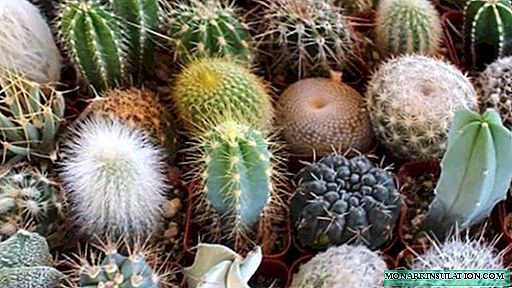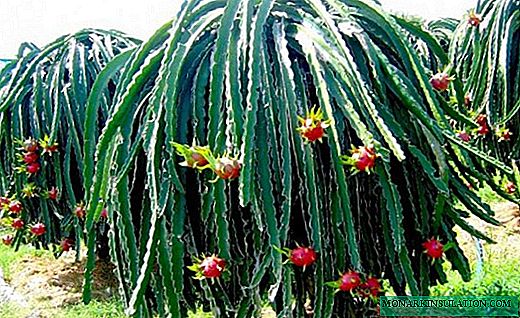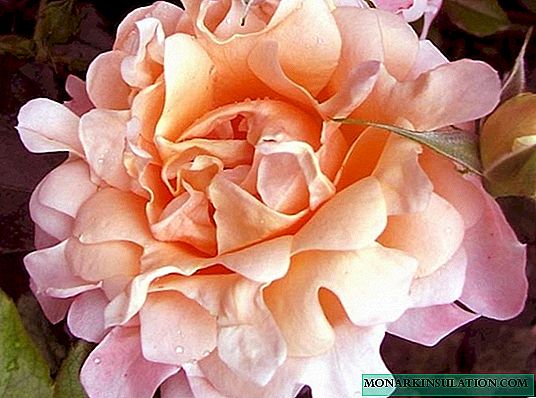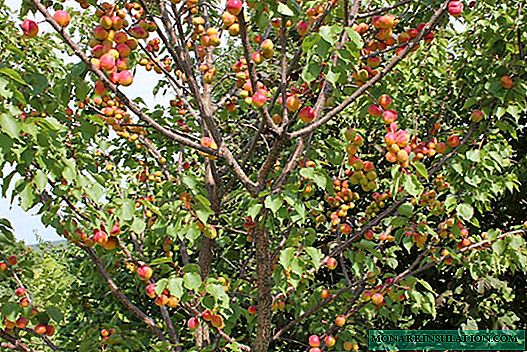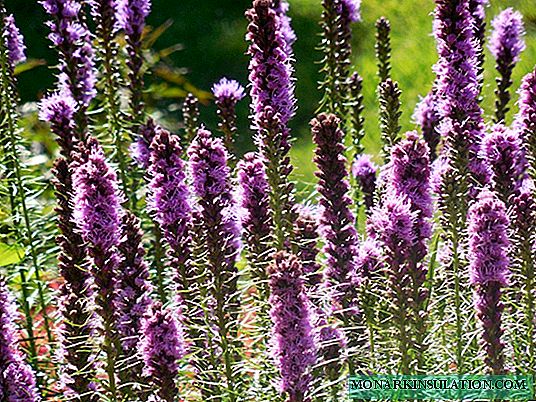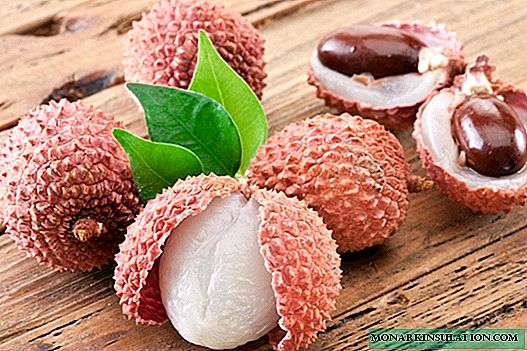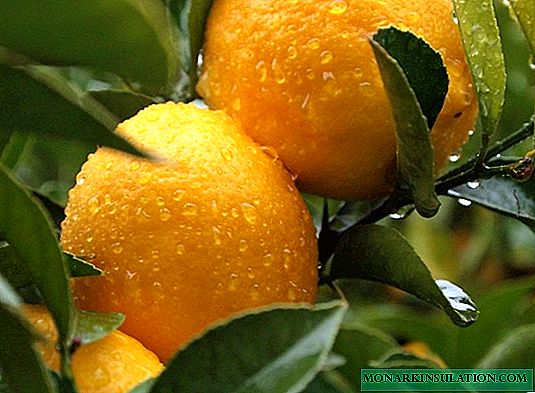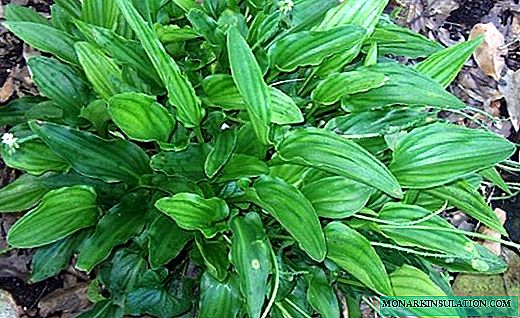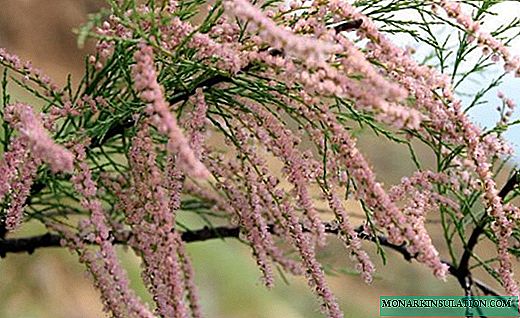Tamarix is a very elegant, low tree or a sprawling shrub from the Tamarix family. The finest branches are covered with many tiny multi-colored flowers that give the crown of the plant airiness. For a hot sunny garden, tamarix will be the best solution. It will fill the air with a pleasant aroma, delight the eye with lace growth and perfectly withstand even severe drought. This plant can also be found under the names "comb", "bead", "Astrakhan lilac" and "jengil". It is very hardy, grows in the deserts and steppes of Asia Minor, Southern Europe and Africa. Tamarix is not afraid of salted sandy soils.

Botanical characteristics
Tamarix is a perennial evergreen or deciduous plant with powerful roots. Like a thick vine, they rush underground in different directions in search of water and nutrients. The average height of the plant is 3-5 m, sometimes there are trees up to 12 m in height. The form of vegetation is tree-like or shrubby. The diameter of the trunk does not exceed 50 cm. Many thin processes are formed from the main shoot and lateral skeletal branches.
Leaflets resembling small scales are 1-7 mm in length. They are painted in dark green, emerald or bluish-green color and fit snugly against the stem. Saline glands are present on the foliage.

















The flowering period in various species of tamarix occurs at different times. The first flowers appear in May at the four-stamen tamarix. Loose tamarix blooms last in August-September. Flowers on very short pedicels are collected in paniculate or racemose inflorescences on the shoots of 1-2 years of life. Even unbroken buds are highly decorative. As if the smallest beads of pastel colors, they stick to branches.
Bisexual flowers 1.5-5 mm long consist of ovoid or linear bracts with a blunt edge. Under them are 4-7 rounded petals, painted in pink, purple, scarlet or white. In the center are 4-6 filiform, thickened at the base of the stamens with heart-shaped anthers and an oblong ovary with a trihedral column.

After pollination, the branches are covered with small fruits - polyhedral pyramidal boxes with many seeds. Each seed has a crest. After ripening, the bolls open and the wind carries the smallest seeds over long distances.
Types of tamarix
The genus tamarix has about 60 species of plants. Here is some of them:
Tamarix is branched. Shrub with a height of not more than 2 m has a slender, vertical crown. The branches end with thin green shoots covered with narrow awl-shaped leaves up to 1.5 mm long. In June-September, pink flowers bloom, collected in racemose blossoms. Varieties:
- Rubra - covered with bright purple-red flowers;
- Pink Cascade - lush thickets densely dotted with light pink flowers;
- Summer Glow - with dense raspberry inflorescences.

Tamarix is elegant. A large sprawling shrub up to 4 m high consists of thick, drooping branches. They are covered with smooth brown-chestnut bark with light brown spots. Lanceolate or subulate leaflets differ in length even on one plant. They fit snugly against the branches. It blooms in May, dissolving racemose inflorescences 5-7 cm long. Bright pink flowers persist throughout the summer.

Tamarix is four-tailed. A large shrub that looks like a tree with several trunks grows 5-10 m high. The lignified shoots are covered with brown-red bark. In April-May, loose voluminous tassels of light pink flowers with round petals and long club-shaped stamens open. Leaflets are thin, but quite long. They are painted bright green.

Tamarix Meyer. This species absolutely does not tolerate frost, therefore it is suitable for cultivation only in the southern regions. It is a sprawling shrub with a reddish bark, which grows 3-4 m in height. Scaly leaves are adjacent to the branches. They are painted a bluish green color. In May, elongated dense inflorescences bloom in the form of brushes up to 10 cm long. They consist of small lush flowers of pink color.

Plant propagation
Tamarix is propagated by seed and vegetative methods. To grow a healthy and strong seedling from seeds is quite difficult, it requires great effort, greenhouse conditions and a long period of time. Seeds lose their germination within 4 months after ripening, so they need to be sown as soon as possible. To do this, prepare containers with loose, fertile soil mixed with a lot of sand. Plants are grown at room temperature and moderate humidity for the first two years. In spring and summer, the pots are taken out onto the street, and for the winter they must be brought into the heat. Tamarixes have been planted in open ground with a lump of land since the third year.
Vegetative propagation of tamarix was much more popular. It is best to cut the cuttings in the fall. Young branches of 10-15 cm long are used. Immediately after cutting, the cuttings are placed in a container with warm water until the primordia of the first roots appear. Then the plants are planted in sandy peat land at an angle. They are kept in a warm, well-lit room. Landing in open ground is planned for May-June. Before the first wintering, it is necessary to thoroughly mulch the soil near tamarix with peat and fallen foliage.

Good reproduction by layering. To do this, a stronger lignified branch is dug into the ground to a depth of 20 cm and carefully fixed. If you carry out this procedure in the spring, strong roots will appear before the end of summer. The escape can be separated and transplanted to a permanent place.
Landing and care
Tamarix is an undemanding, tenacious plant. He really loves light, so you need to plant shrubs in a well-lit, open area. In the shade and even in partial shade, growth slows down significantly and the plant may die.
It does not tolerate beads and heavy, moist soils. Landing is made in the spring. Too dense soil is dug up with peat and sand. Sour earth is mixed with lime. The landing pit is made deep enough so that a drainage pillow made of pebbles or gravel is placed at the bottom. For better adaptation, the plants are immediately fertilized with a solution of ash and humus immediately after planting.

From the first days, watering should be more plentiful, but gradually reduce it. An adult tamarix does not need constant care, it can even do harm. You can forget about the plant and only in the long exhausting heat, especially during the flowering period, occasionally watered. The rest of the time, the tree is perfectly dispensed with natural rainfall.
To the temperature regime, tamarix is also undemanding. It is not covered by burns in direct sunlight, and also withstands fairly severe frosts in winter (up to -28 ° C). A small shelter of the soil and the base of the trunk with spruce branches and fallen leaves is enough for him. Even if the tips of the shoots freeze, they will quickly be replaced by young shoots.
High humidity only damages plants. From it, the likelihood of infection with rot and other fungal infections increases. If tamarix grows on fertile soils, one top dressing in mid spring is enough for him. It is best to use a mixture of ash with mullein or chicken droppings.

To keep the plant attractive, it needs to be pruned regularly. It is best to prune in early spring, before sap flow. Old branches are cut in a ring. Within a month they will be covered with young shoots and bloom in a magnificent spherical hat. Shrubs are prone to thickening, so it is necessary to remove part of the middle branches.
Tamarix pests practically do not attack. Only if there is another heavily infected plant nearby, the parasites can move to the bead branches. But fungal diseases in a damp place or with regular flooding of the soil can affect tamarix. The best prevention is proper care and drier maintenance. If necessary, regular treatment with fungicides is carried out. Affected vegetation must be ruthlessly cut and burned.

The use of tamarix
Fabulous lace thickets of tamarix are ideal for landscaping. Plants are planted singly near the recreation area, or in loose groups. From tamarix you can create an excellent hedge or a lush, bright fountain of flowering branches in the center of the lawn. Bushes and low trees go well with juniper and other conifers. Tamarix can also be planted near barberry, lilac or jasmine. Planting shrubs on the slopes, you can prevent landslides and strengthen the soil. During flowering, the plant is an excellent honey plant.
Tamarix is also known for its medicinal properties. Its bark and leaves contain tannins, polyphenols, tannins and coloring pigments. Leaves, young twigs and inflorescences are harvested in the summer. Decoctions and alcohol tinctures are made from them, which are taken as diuretic, diaphoretic, analgesic, hemostatic and astringent. They can also help relieve symptoms of stomach inflammation, an attack of rheumatism, diarrhea, and stop bleeding.

